Hasegawa 1/32 Ki.61-1 tei (conversion)
This is the beautiful Hasegawa ki.61-I tei, converted from the Ki.61-I hei using the Wolfpack resin nose for the extended cowling to make the "long nose" Tony. It is marked as the well-known "celebrity" Tony flown by Major Teruhiko Kobayashi of the 244th Sentai in early 1945, using the excellent Lifelike Decals sheet.
The first JAAF fighter that met Western standards to see combat in the Pacific War was the Kawasaki Ki.61, known officially as the Type 3 Model 1 land-based interceptor. The Japanese name was Hien - which translates as "Flying Swallow" - while the Allied code name was "Tony." First encountered over New Guinea in 1943, where it was initially thought by the Allies to be perhaps a development of either the Messerschmitt Bf-109 or the Macchi C.202 (hence the code name), the Ki.61 gave a good account of itself throughout the remainder of the Pacific War. It was considered by its opponents to be one of the most dangerous Japanese fighters, and very difficult to shoot down.
Kawasaki had acquired the manufacturing rights to the new series of Daimler-Benz aircraft engines in 1937, though it would not be until 1940 that the JAAF would take advantage of this fact. In February 1940, Kawasaki received development contracts for two fighter designs to be powered by the Daimler-Benz DB601A: the Ki.60 and Ki.61. Of the two, the Ki.60 was a very straightforward attempt to emulate European design standards, with the result being a "heavy" fighter with a top speed of 350 mph, which was the fastest of any JAAF aircraft to date when it first flew in March 1941 with a German DB601A engine. The Ki.60 was, however, ahead of its time so far as the JAAF was concerned, and further development was given over to the lighter, more "Japanese," Ki.61.
Kawasaki had simultaneously been working on the Ha.40, an indigenous development of the DB601A that was lighter than the original German engine, and rated at 1,175 h.p. Unfortunately, this lightness of design would ultimately be the downfall of the engine, because it could not stand up to prolonged operational use, in addition to being subject to poor quality control in production.
First flown in December 1941, the Ki.61 was first encountered over New Guinea in late 1942, when it was mistaken for a German Bf-109. The Ki.61-Ia (Otsu), was armed with two 7.62mm machine guns in the wings, and two 12.7mm weapons in the fuselage. In August, 1943, production added the Model 1b (Hei), in which the 12.7mm wing guns were replaced by German 20mm MG 151 Mauser cannon. Only 800 of these weapons were obtained from Germany, limiting production of the Model 1b to 400 aircraft. An alternative production version, the Model 1c (Koh), replaced the previous armament with 4 12.7mm weapons in both the fuselage and wings. In January 1944, production switched to the Model 1d (Tei), which substituted domestically-designed Ho-5 20mm cannon for the wing armament, as well as having two 20mm Ho-5s mounted in the fuselage, necessitating a 10-inch extension of the forward fuselage to provide room for these weapons. All four versions could be found operating in the same unit by 1944-45.
After fighting in New Guinea, the Ki.61 next appeared over Rabaul. This was followed by deployment to China, where it proved more than a match for the P-40s of the 23rd Fighter Group, which in turn led to expedited equipment of the 23rd FG with the P-51 Mustang in early 1944. The Ki.61 also equipped units based in the Philippines in 1944.
The appearance of the B-29 in significant numbers over Japan, beginning in November 1944, led to the return of as many Ki.61-equipped units to the Home Islands as possible. In limited combat against the China-based B-29s in the summer of 1944, the Ki.61 had proven to be one of the few Japanese fighters capable of meeting the B-29 at altitudes over 30,000 feet. It equipped Japanese Taiatari (special attack) units, such as the 244th Sentai based outside Tokyo, since its design allowed for ramming attacks against B-29s that gave the pilot a good chance of a successful bailout just before impact.
The best-known unit to operate the Ki.61 was the 244th Sentai. Based at Chofu, a suburb of Tokyo, their efforts were guaranteed heavy coverage in the national media. Led by Captain Teruhiko Kobayashi, the youngest Sentai commander in the J.A.A.F., the 244th became known to the 20th Air Force B-29 crews for their terrifying ramming attacks, and eventually was the top-scoring Japanese unit against the B-29s.
Wolfpack Design (www.wolfpack-d.com) released a Tei conversion set, WPD32001, which includes an extended nose, detailed exhaust, 20mm Ho-5 cannon barrels and breeches, and rub-on decals for four aircraft. The conversion is the essence of simplicity, cutting off the kit nose along a panel line and replacing it with the resin part, which fits perfectly. The3 set is no longer in production, but can be found on the internet. Lifelike Decals in Japan (www16.ocn.ne.jp/~lifelike/) released three decal sheets (32-003, 32-004, 32-005) “244th Sentai Best Collection”, which has four aircraft on each sheet, of which 7 of the total 12 aircraft are the “Tei”. The series is well-researched with excellent artwork and quality printing.
I gave the model an overall thin coat of Tamiya “Flat Aluminum,” and then applied Talon “Platinum” overall. This was masked for various panels which were painted with Talon “Aluminum” and “Dark Aluminum”.
When this was all dry, I applied the markings for Major Kobayashi's well-known Ki.61-I “Tei.” This airplane was flown in a variety of markings and camouflage, and it appears as three of the seven “Tei” variations on the decal sheets, in its various iterations. Lifelike has done their research here, contacting former 244th Sentai pilots and crew, and they demonstrate that the argument over whether the airplane was in red or blue markings depends on what time frame one is speaking of. I chose to do the airplane as it was seen in late April 1945.
Once the decals were set, it was time to airbrush the green blotches around them, as was done on the real airplane. With the Tamiya “Japanese Army Green” thinned 50-50 with Tamiya thinner, I was able to do a very realistic recreation of the airplane.
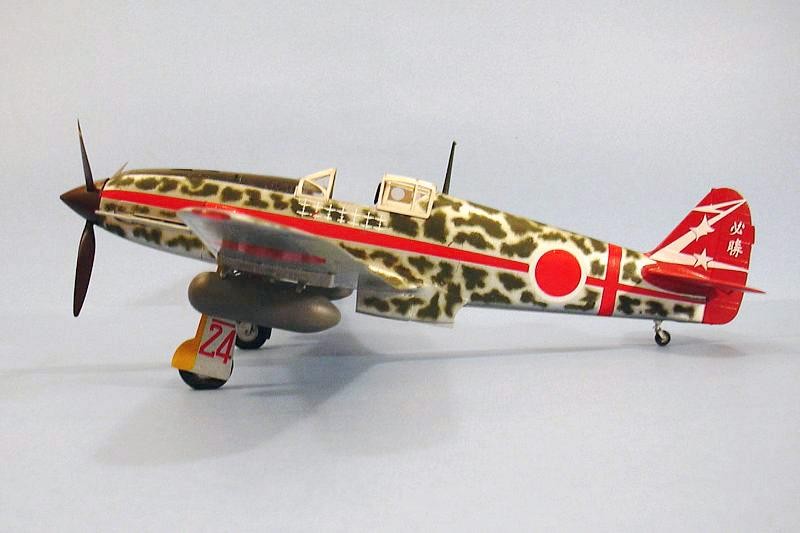
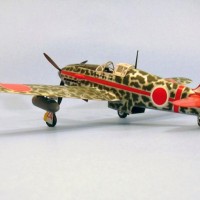
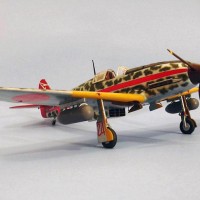
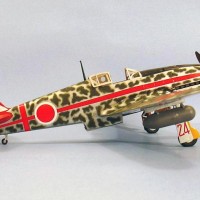
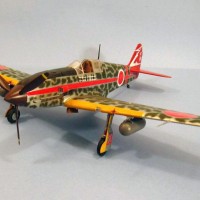
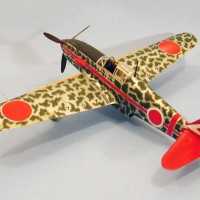

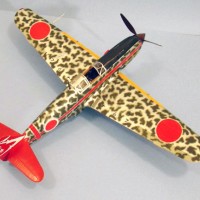
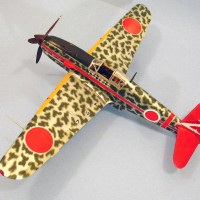
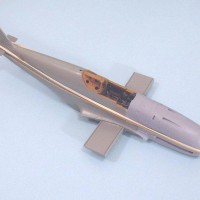
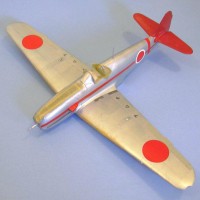
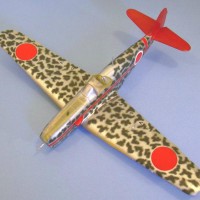

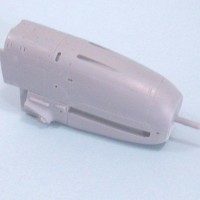
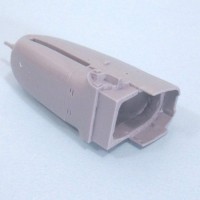
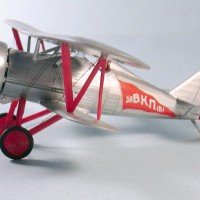
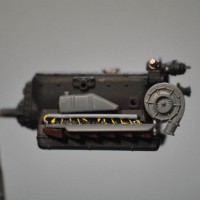
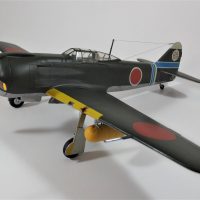
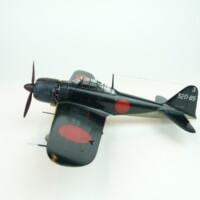
Tom...It looks great. I have never done a Japanese aircraft before, but the Ki-61 has always tempted me..someday maybe.
Beautiful work as always as well as interesting text.
I have a mate name of "Long Nose Tony". He ain't Japanese and he sure as hell ain't any where as good looking as your "Long Nose Tony". Nicely done!
Nice job on the camo.
nice puzzle
Stunning ! I can't think of a better description.
Very sharp Tom as usual , and a lovely history lesson as well.
It must of been fun with the paint job.
Had to wait two hours after the last cuppa coffee before touching the airbrush. 🙂
No doubt. Another fine model Tom.
Killer paint job and camo. Also great description of this aircraft, I learn something new everyday at "iModeler".
"I learn something new every day at iModeler" - that is the cool thing about this place. I love showing the stuff I do, and getting the responses I get, but I want you all to know I learn here too.
It's certainly a very good looking aircraft, and your beautiful work really sets it off.